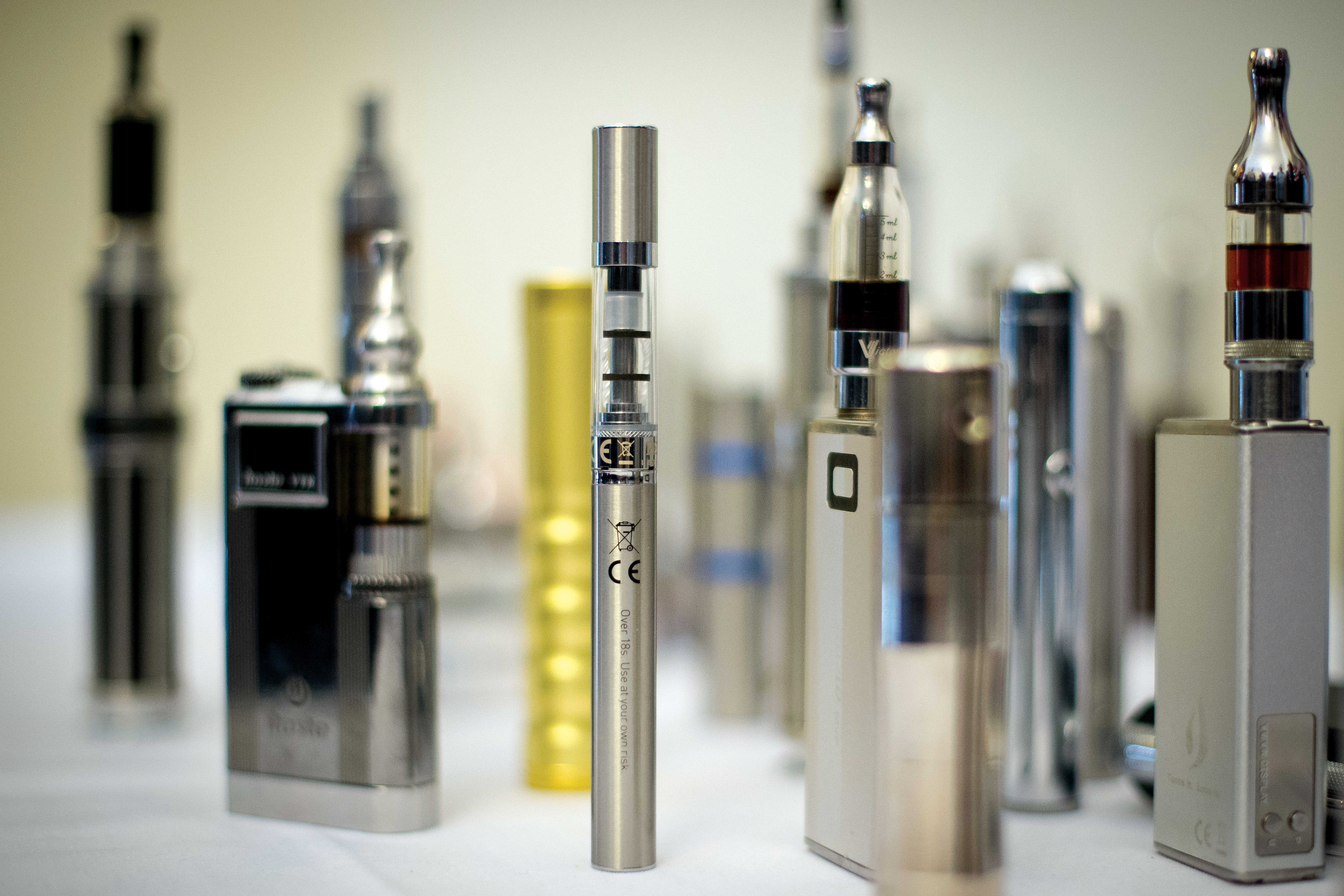The promotion of e-cigarettes as a device to help smokers kick the habit has proved futile. In fact, e-cigs have become a glamorous gateway drug for youngsters
Piyush Gulati (name changed), was 16 when he first smoked an e-cigarette. “A friend who went to Melbourne got one. His cousin was studying there, and was above the legal age for the purchase, so it wasn’t much of a task. Like any teenager, I was curious to try,” recalls Gulati.
Before that, he had not indulged in anything which falls under the ‘cigarettes and vapes’ section. He recalls how he used to enviously look at his friends who smoked puff after puff, clouding up the air.
“The device looked fancy, unlike an ordinary cigarette — which gives you an idea that this is dangerous,” says Gulati. When his friend got an expensive e-cigarette from Australia, Gulati was not much enthused about the device, “let alone use it,” but peer pressure gets to a person after a point, and Gulati succumbed.
Talking about the first time he inhaled an e-cigarette, he says, “it was a very different feeling, smoking it felt exciting, a good timepass.” The duo (Gulati and his friend) did the rounds every day, whenever they met. With each passing day, the duo finished the separate refill which came with the kit, and starting savouring the taste.
Gulati was hooked, and to indulge in this new habit felt he should also get an e-cigarette of his own. “I wanted to use it when I was going out for a walk or just for a hangout.” Gulati then asked another friend, who was “22 but looked 25,” to get an e-cigarette for him. With this, his newfound obsession became a habit.
“The refills were pretty expensive, I started spending more than half of my pocket money on the new flavoured refills. I started researching the flavours as well and what would suit me the best,” he tells.
This whole affair with Gulati’s first e-cigarette to the one he owned, continued for some 18 months, until the day he decided to give it up. However, this decision was not taken to counter this habit, but to consume something which is “stronger.” So, from a nearby paanwala, he purchased his first cigarette, with the same friend, who introduced him to e-cigarettes.
Naturally, the shift from e-cigarettes to real cigarettes became a habit, and by this time Gulati turned 18, he was smoking “almost 6-7 cigarettes in a day — sometimes 8-9 when partying with friends.”
Why was he obsessed with smoking? “I felt it’s my thing, I liked inhaling the tobacco, and I like coffee which tastes strong, so tobacco and coffee became my thing,” says Gulati.
Today, he is 19, studying in an esteemed university in the Southern part of the country, and smoking “some 8-9 cigarettes” in a day, but, he says “that I keep a check on it and will quit someday, but the pressure of course projects, don’t leave you with much control.”
The case study here is to show, how in Gulati’s case, e-cigarettes came first and left him with a stronger obsession: a tobacco addiction.
Doctor’s view
“The e-cigarette market is totally unregulated, unchecked — an unknown entity,” says Dr Arvind Kumar, chest surgeon at Sir Ganga Ram Hospital and founder of Lung Care Foundation, which is dedicated to the cause of promoting lung health in the country.
About the very ingredients of an e-cigarette, Dr Kumar says, “Nobody knows what is being put into them.” He continues, “Various kinds of ethers are definitely there. Because that’s what gets the vapour. Then they put nicotine and then, in addition, who knows if a few other things are also put in it to provide the kick?”
Talking about the fad among teenagers, he says regretfully, “You go to the malls and see these teenagers doing it and thinking as if they’re almost going to the moon, they’re Neil Armstrong. That kind of macho image is built.”
“The truth is that they are being given an addictive material of unknown damage,” tells Dr Kumar. So, what about the claim being put forward by e-cigarettes manufacturers and sellers that it helps in quitting smoking? The example above demonstrates that in this the opposite is the case. Teenagers are getting hooked to smoking by using e-cigarettes first.
On top of that, civil society interventions are also ham-handed. This week, the voluntary association of Trade Representatives of ENDS in India (TRENDS) submitted representation copies to Chief Secretary of Delhi government, also including CM Arvind Kejriwal and Health Minister Satyendra Jain.
ENDS is an umbrella term for smoking devices such as e-cigarettes, vapes, vape pens, hookah pens. All these products are examples of the electronic nicotine delivery systems.
In the representation, the association pointed out, “It is unfortunate that India still doesn’t have any policy framework for this critical product that provides a harm reduction option to smokers. They are removing the choice of the consumer of moving to a less harmful method of nicotine consumption.”
However, Dr Kumar doesn’t agree with this claim at all. He says “it’s an absolutely wrong thing which is being promoted by people who are promoting e-cigarettes. One poison cannot be a remedy for another poison.”
“We don’t know the long-term harm. With regular cigarettes we know what are the materials and what’s the harm. Here, we don’t even know,” Dr Kumar emphasises.
He also points out, “Nobody has studied it scientifically. It spread like wildfire and money is being pumped in by manufacturers as if it’s the safest thing on earth.”
“The correctness of the studies which claims that e-cigarette helps in quitting regular cigarettes can always be doubted. Why add one more health damaging chemical to regulate? Ban it,” says Dr. Kumar.
In June, a vape pen exploded in the mouth of a 17-year-old boy, which left him with his mouth bleeding, teeth broken, and jaws shattered. After medical examination, it came to notice, that the boy not only punctured his chin, but was also left with severe cuts in his mouth.
Court strictures
Early July, a bench of Chief Justice DN Patel and Justice C Hari Shankar raised serious concerns about the government’s role in the ban of e-cigarettes in the Capital.
The bench said “Are you doing something? Look at the damage it is causing to our children. Is anyone looking at this matter… See the urgency. Look at the content of nicotine in them… It is an e-burning issue.”

Not only this, the court also asked the government’s counsel to come up with an affidavit which shows the detailed steps taken by the government, so that a policy to ban e-cigarettes can be formulated.
E-cigarettes as well as regular cigarettes, have become quite a fad in Delhi and other parts of the country since a few years. A global study — Global Tobacco Atlas — claimed that more than 6.25 lakh children in India smoke cigarette every day.
The study also claimed that consumption of tobacco takes 17,887 lives in India every week. Another report, by American Cancer Society and US-based Vital Strategies claimed that smoking holds an economic cost of Rs 19 lakh per smoker.
To understand the severity of the situation and consumption of e-cigarettes, a surprise inspection at a well-known school in east Delhi led to the discovery of a large number of vaping pens, which are similar to e-cigarettes.
Although the manufacturers continue to warn that these e-cigarettes are not for minors, Patriot’s visit to a famous e-cigarette and vape store in central Delhi painted another picture.
When you ask for an e-cigarette at the store, the salesman asks you the number of cigarettes you are in the habit of smokers. Based on that, he will show you the e-cigarette model.
Looking at various models of the same, realisation dawns that there is no visible warning sign on the box. Almost all the packages did not have a statutory warning, like you see on cigarette boxes — warning that smoking is bad for health.
A close scrutiny of the boxes showed a warning by the American Cancer Society, but the text is so small, that a customer will hardly notice it, let alone get his antenna up. It is clear that companies are happily ensnaring a new generation of smokers, for whom the fancy e-device will only lead to tobacco addiction.





